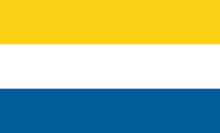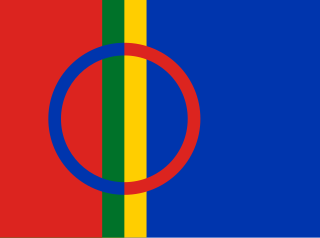
Sápmi is the cultural region traditionally inhabited by the Sámi people. Sápmi is in Northern Europe and includes the northern parts of Fennoscandia, also known as the "Cap of the North".
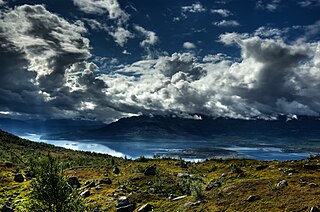
Norrbotten County is the northernmost county or län of Sweden. It is also the largest county by land area, almost a quarter of Sweden's total area. It shares borders with Västerbotten County to the southwest, the Gulf of Bothnia to the southeast, the counties of Nordland and Troms in Norway to the northwest, and Lapland Province in Finland to the northeast.

Sweden Finns are a Finnish-speaking national minority in Sweden.

Norrbotten, known in English as North Bothnia, is a Swedish province (landskap) in northernmost Sweden. It borders south to Västerbotten, west to Swedish Lapland, and east to Finland.

Karelians are a Finnic ethnic group who are indigenous to the historical region of Karelia, which is today split between Finland and Russia. Karelians living in Russian Karelia are considered a distinct ethnic group closely related to Finnish Karelians, who are considered a subset of Finns. This distinction historically arose from Karelia having been fought over and eventually split between Sweden and Novgorod, resulting in Karelians being under different cultural spheres.

Meänkieli is a Finnic language or a group of distinct Finnish dialects spoken in the northernmost part of Sweden along the valley of the Torne River. Its status as an independent language is disputed, but in Sweden it is officially recognized as one of the country's five minority languages and is treated as a distinct language from standard Finnish. According to the Swedish National Association of Tornedalians, 70.000 individuals are able to understand Meänkieli, atleast to some level.

Kvens are a Balto-Finnic ethnic minority in Norway. They are descended from Finnish peasants and fishermen who emigrated from the northern parts of Finland and Sweden to Northern Norway in the 18th and 19th centuries. In 1996, Kvens were granted minority status in Norway, and in 2005 the Kven language was recognized as a minority language in Norway.

The Torne, also known as the Tornio, is a river in northern Sweden and Finland. For approximately half of its length, it defines the border between these two countries. In the upper parts, the river is situated in Sweden before it meets the Muonio River where it adjoins the international border. It rises at the lake Torneträsk near the border with Norway and flows generally southeast for a distance of 522 kilometres (324 mi) into the Gulf of Bothnia. It is the largest river in Norrbotten County both by length and by watershed area.
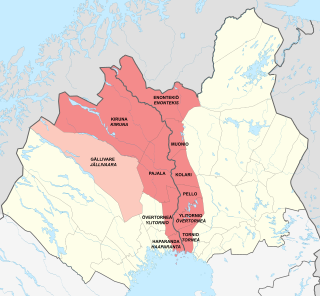
Meänmaa, or sometimes Torne Valley or Torne River Valley lies at the border of Sweden and Finland. It is named after the Torne River flowing through the valley and into the Gulf of Bothnia. Geographically the townships and municipalities that make up the area are Haparanda, Övertorneå, Pajala and Kiruna in Sweden, and Tornio, Ylitornio, Pello, Kolari, Muonio and Enontekiö in Finland. Culturally the highland Swedish municipality Gällivare is sometimes also considered part of Meänmaa due to the large share of Meänkieli-speaking population in it. Torne Valley should not be confused with Torne Valley Sub-region.
In 1999, the Minority Language Committee of Sweden formally declared five official minority languages: Finnish, Sámi languages, Romani, Yiddish, and Meänkieli.

Pajala is a locality and the seat of Pajala Municipality in Norrbotten County, Sweden, with 1,958 inhabitants in 2010. It is located in Swedish Lapland.

Mikael Niemi is a Swedish author. He wrote the novel Populärmusik från Vittula. It is the story of a young boy, Matti, growing up in Pajala in the 1960s and is recounted in a humorous way. It became a best-seller in Sweden and was subsequently translated into 30 languages and made into a film in 2004 by Reza Bagher.

The Kven language is a Finnic language or a group of Finnish dialects spoken in the northernmost parts of Norway by the Kven people. For political and historical reasons, it received the status of a minority language in 2005 within the framework of the European Charter for Regional or Minority Languages. However, it is seen by some as a mutually intelligible dialect of the Finnish language, and grouped together with the Peräpohjola dialects such as Meänkieli, spoken in Torne Valley in Sweden. While it is often considered a dialect in Finland, it is officially recognized as a minority language in Norway and some Kven people consider it a separate language.

Swedish is the official language of Sweden and is spoken by the vast majority of the 10.23 million inhabitants of the country. It is a North Germanic language and quite similar to its sister Scandinavian languages, Danish and Norwegian, with which it maintains partial mutual intelligibility and forms a dialect continuum. A number of regional Swedish dialects are spoken across the country. In total, more than 200 languages are estimated to be spoken across the country, including regional languages, indigenous Sámi languages, and immigrant languages.
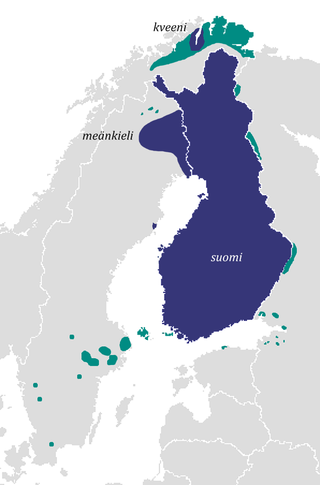
Finnish is a Uralic language of the Finnic branch, spoken by the majority of the population in Finland and by ethnic Finns outside of Finland. Finnish is one of the two official languages of Finland. In Sweden, both Finnish and Meänkieli are official minority languages. The Kven language, which like Meänkieli is mutually intelligible with Finnish, is spoken in the Norwegian counties Troms and Finnmark by a minority group of Finnish descent.

Karungi is a locality situated in Haparanda Municipality, Norrbotten County, Sweden with 232 inhabitants in 2010. The language most spoken in the village is Meänkieli, which the first of April 2000 officially was declared as a minority language in Sweden.

The Peräpohjola dialects are forms of Finnish spoken in Lapland in Finland, Sweden, and Norway. The dialect group belongs to the Western Finnish dialects and it is divided into five more specific dialect groups.
Swedification refers to the spread and/or imposition of the Swedish language, people and culture or policies which introduced these changes. In the context of Swedish expansion within Scandinavia, Swedification can refer to both the integration of Scania, Jemtland and Bohuslen in the 1600s and governmental policies regarding Sámi and Finns in northern Sweden during the 1800s and 1900s.
Anti-Finnish sentiment is the hostility, prejudice, discrimination or racism directed against Finns, Finland, or Finnish culture.
